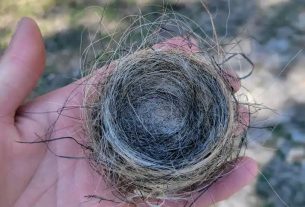Modern Quality of How to Create a Pig Cage
Pigs are very strong and interactive animals. They enjoy their space and convenience. Even though some have attributed pigs to be dirty, they also like being clean.

When a pig is in a clean environment, they can even become healthy. One of the challenges pig owners face is creating a pig cage for their pets. It can be a cumbersome challenge especially when you are a newbie into the business. Thankfully, this write-up discusses the process of constructing a pig cage. Keep reading!
How To Create A Pig Cage
This section of the article provides the process of how to create a pig cage:
Step 1: Visualize the Cage When Starting.
When you first start, try to visualise the cage’s size. Different breeds have different room requirements. Smaller pigs require less space than larger ones. A method to accomplish this is to measure at least 20 square feet of each pig. Multiply the space needed by the number of pigs.
This will help you determine the size of the cage. Remember that pigs prefer to roam and root around. The more room you have, the better.
Step 2: Choose the Location For The Cage
When it comes to building a pig cage, location matters. Make sure to find a flat and dry spot. Avoid places prone to flooding and dirt. Pigs do not like standing water. They prefer dry grounds.
Make sure the cage is close to your home. You want to be able to check on them effortlessly. However, make sure that the area is distant from any potential threats, such as prey. This includes busy streets, sharp items, and other animals.
Step 3: Select the Right Building Materials
The right materials are needed for making a strong cage. Wood is the best material for this. This is because it is durable and can be made to endure longer. For longer-lasting results, choose pressure-treated wood. 
Wire fencing is another good material. It offers visibility and ventilation. Make sure the wire is strong enough to hold off a pig’s weight. Use welded wire instead of small wire. Pigs may easily escape from weaker materials.
Step 4: Design the Cage
Design the cage to meet the demands of your pigs. Pigs require both indoor and outdoor spaces. The inside space should be dry and comfortable. Do well to plan for enough ventilation. Do well to construct an outside cage that connects to the indoor space. This allows the pigs to root and explore.
READ ALSO: How to Treat Swine Fever In Pigs
To keep interior and outdoor areas different, fence the whole room. This protects them and allows them to be free. Do not leave them there without external protection. Make sure to include a shelter in the outdoor area. The shelter should protect against rain and sun. A basic canopy is the best for this.
Step 5: Build the Indoor Space
Start building the indoor cage. Do well to build walls with treated wood. Make sure the walls are tall enough. Pigs are extremely strong and curious and may try to run away if they feel constrained. Do well to construct a strong door. Make sure it closes securely.
This prevents pigs from wandering away. You want to ensure that they are safe inside. Straw and wood will also function well. This keeps the floor comfortable.
Step 6: Construct the Outdoor Cage
Next, create the outdoor cage. Make careful use of robust fencing materials. Make sure the fence is at least 4 feet tall. Pigs can jump remarkably well. Bury the bottom of the fence a few inches deep.
This prevents the pigs from tunnelling beneath the fence. Make sure there are no gaps in the fence. Pigs are intelligent and will find a way out if they can.
Step 7: Ensure Proper Ventilation
Ventilation is vital for indoor spaces. Proper airflow reduces odours and keeps pigs healthy. Install vents near the tops of the walls. This permits hot air to escape from the window. In addition, keep track of the cage’s humidity levels.



